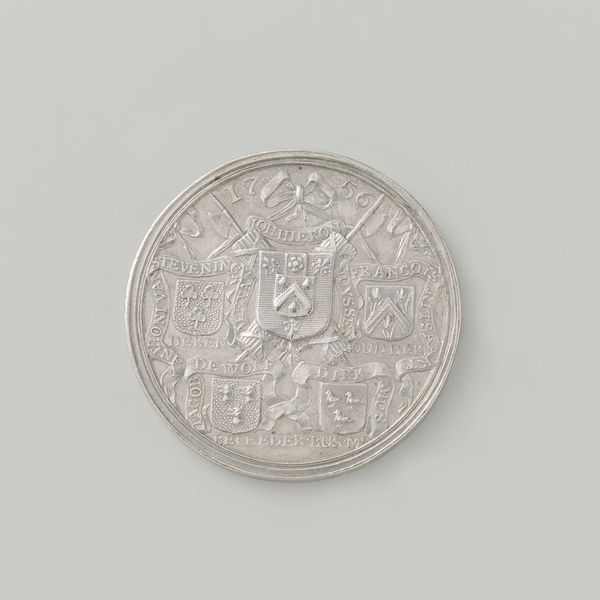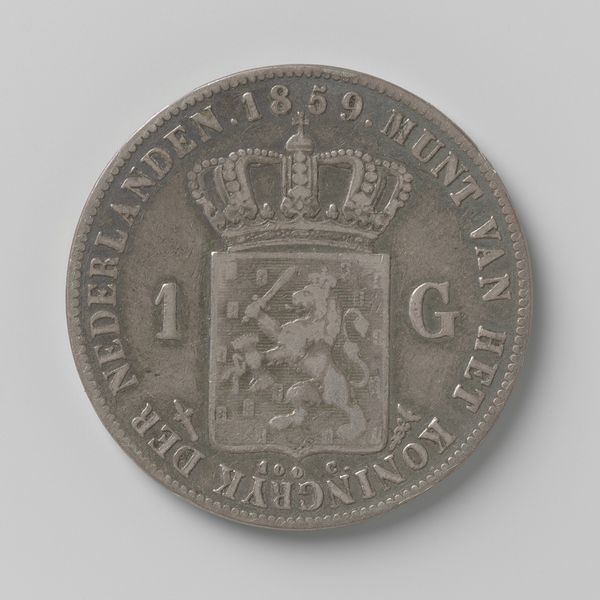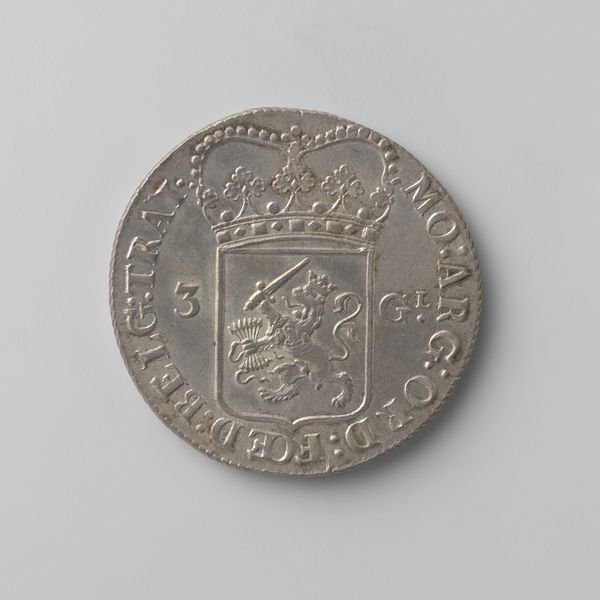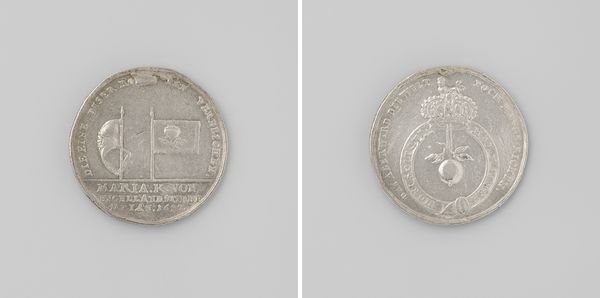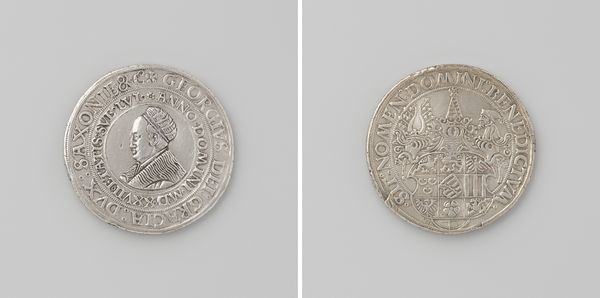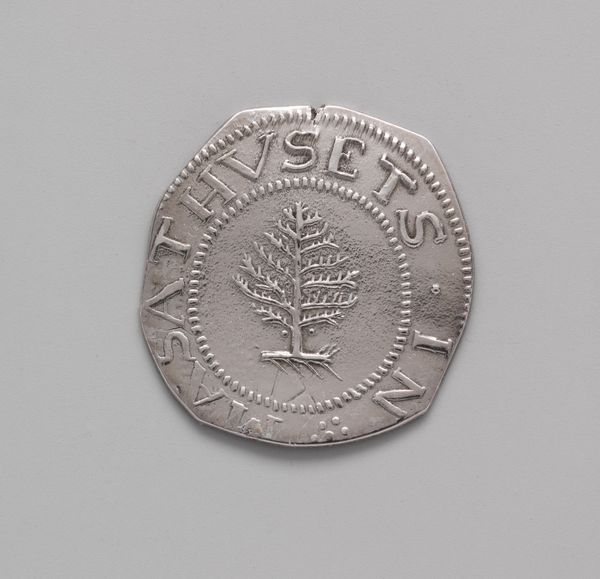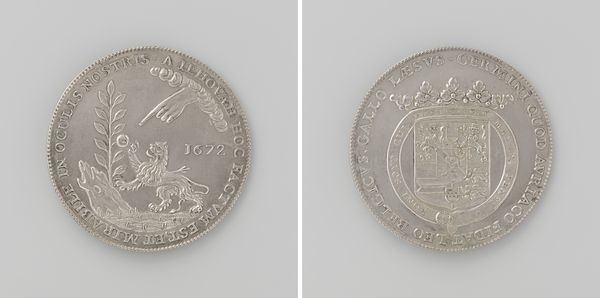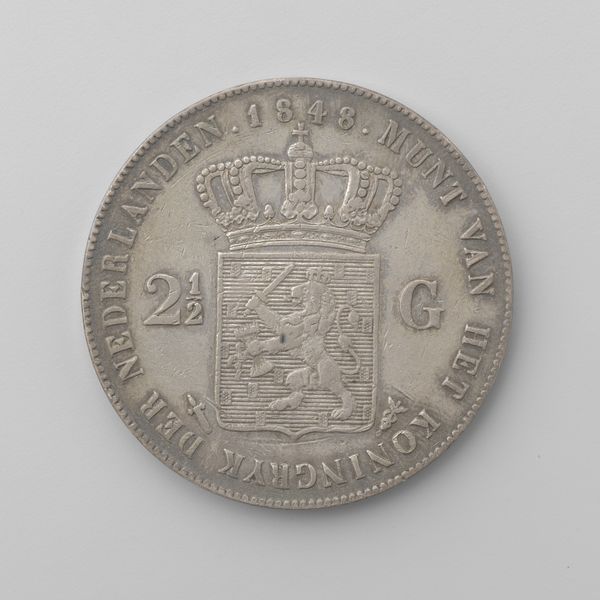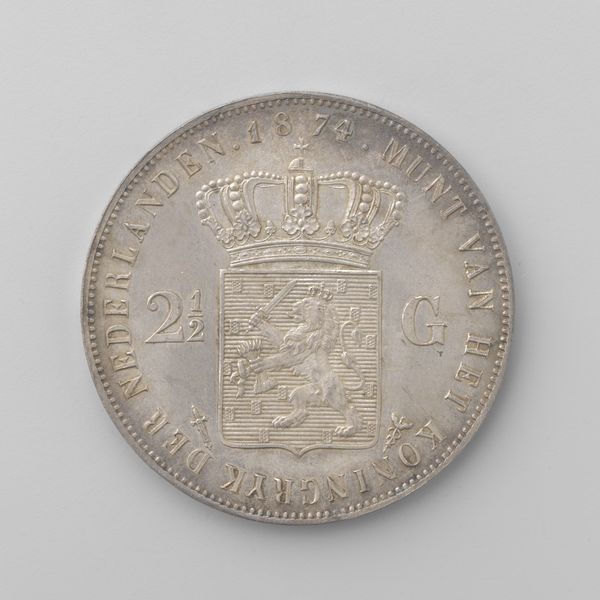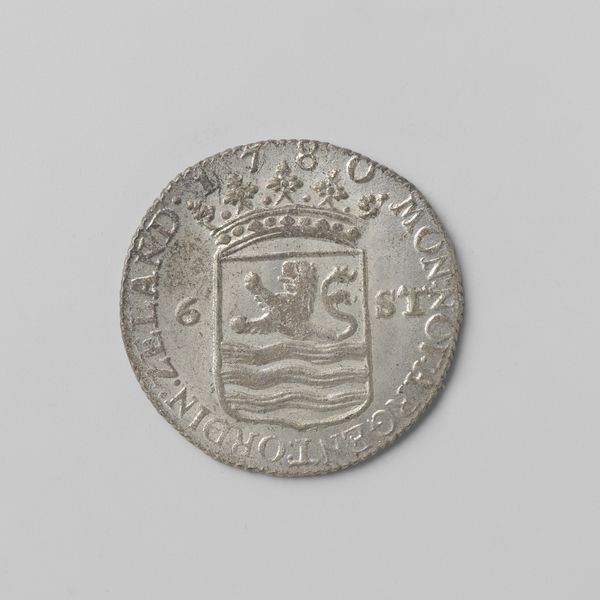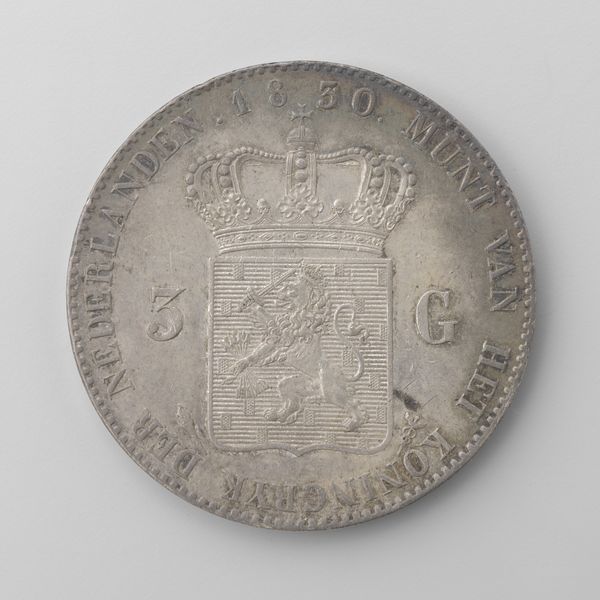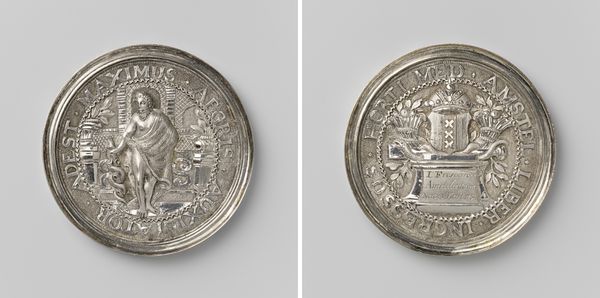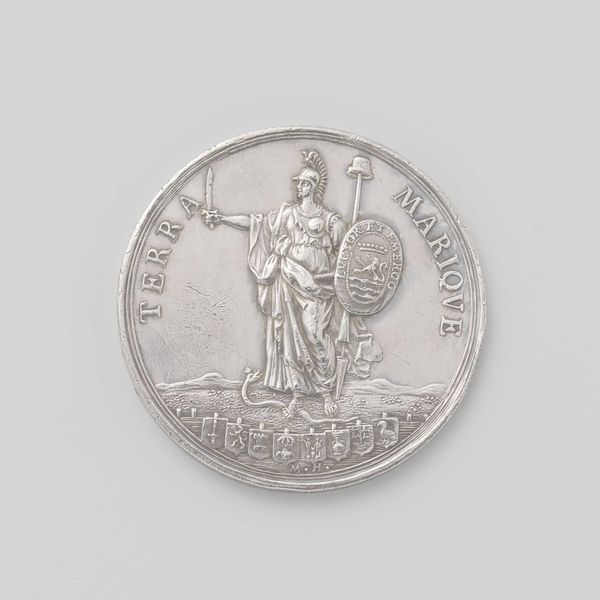
Beloning van Hollandse Nijverheid voor Dommer & Comp. Porseleinfabriek aan den Amsel met bijbehorende doos 1808
silver, relief
portrait
medal
neoclacissism
antique finish
silver
relief
history-painting
Copyright: Rijks Museum: Open Domain
Editor: Here we have a silver reward medal from 1808, honoring the Dommer & Company Porcelain Factory. It's a striking piece with intricate relief work; it gives a strong impression of state power. What do you make of it? Curator: This medal isn’t just about celebrating a successful porcelain factory. It’s deeply entangled with the political landscape of the time. 1808—that places it firmly within the Napoleonic era. Louis Bonaparte, Napoleon's brother, was King of Holland. Editor: So, it’s not just a reward for industry, but a political statement? Curator: Precisely! It's a performance of power. Think about who is commissioning this. Why create an award? What kind of image does the Kingdom of Holland want to project through objects like these? This imagery is deliberate. It's visually tying itself to a longer history of statehood and therefore claiming legitimacy. The medal would function as propaganda by showing benevolence towards local manufacturers while also controlling narratives of Dutch identity under French rule. Editor: The text surrounding the coat-of-arms refers to "Beschermer der Volksvlyt"– protector of popular industry. So, it's about protecting the industry through... French Imperialism? Curator: It's paradoxical, right? Protector, but also imposed rule. Think about the power dynamics at play here. Who defines "Dutch industry" at this moment? Who benefits? These medals become sites of negotiation. They represent both Dutch industriousness *and* French influence, and maybe a hint of Dutch collaboration. How do we untangle that? Editor: It really makes you question what is actually being celebrated, the company's accomplishments or the King's power. Curator: Exactly! And that questioning is where art history becomes truly exciting.
Comments
No comments
Be the first to comment and join the conversation on the ultimate creative platform.
